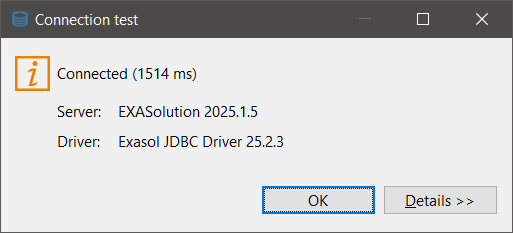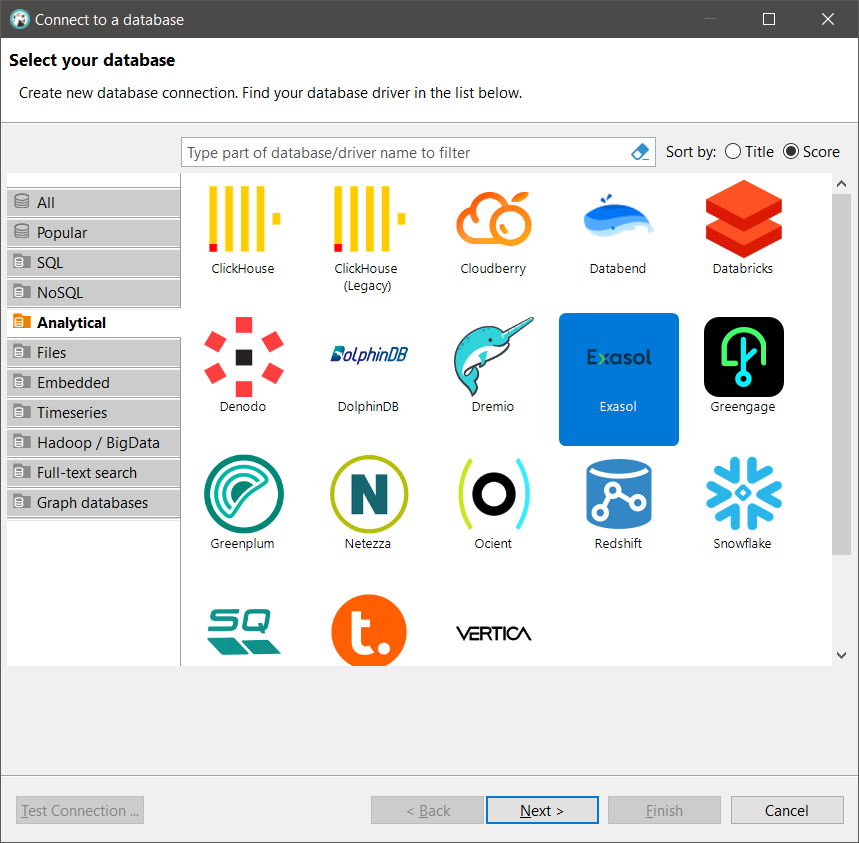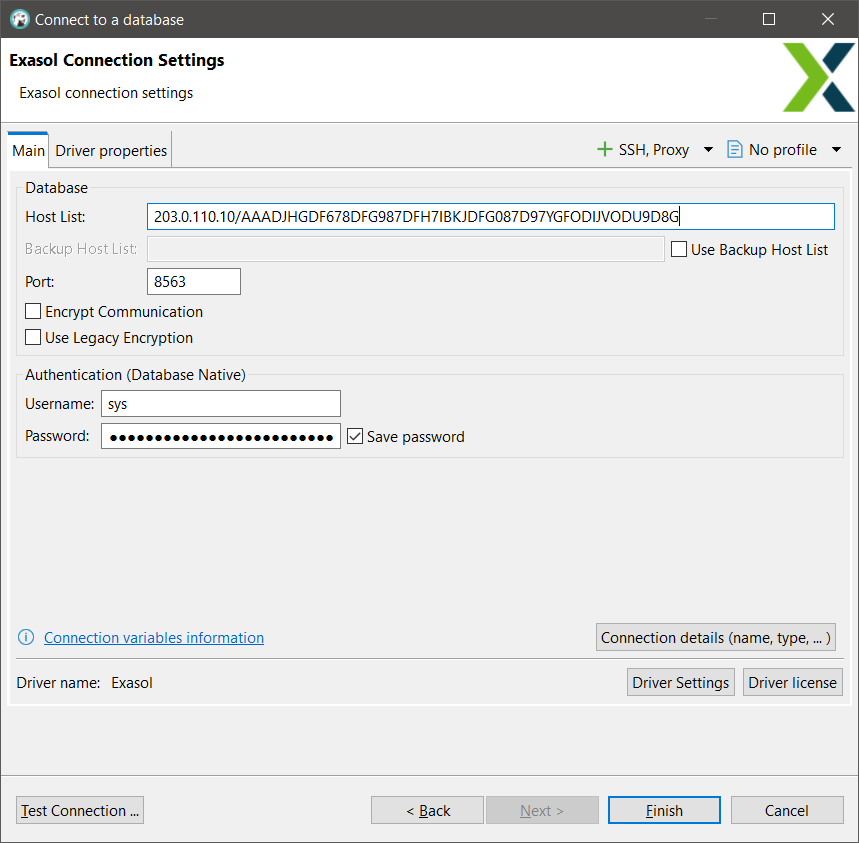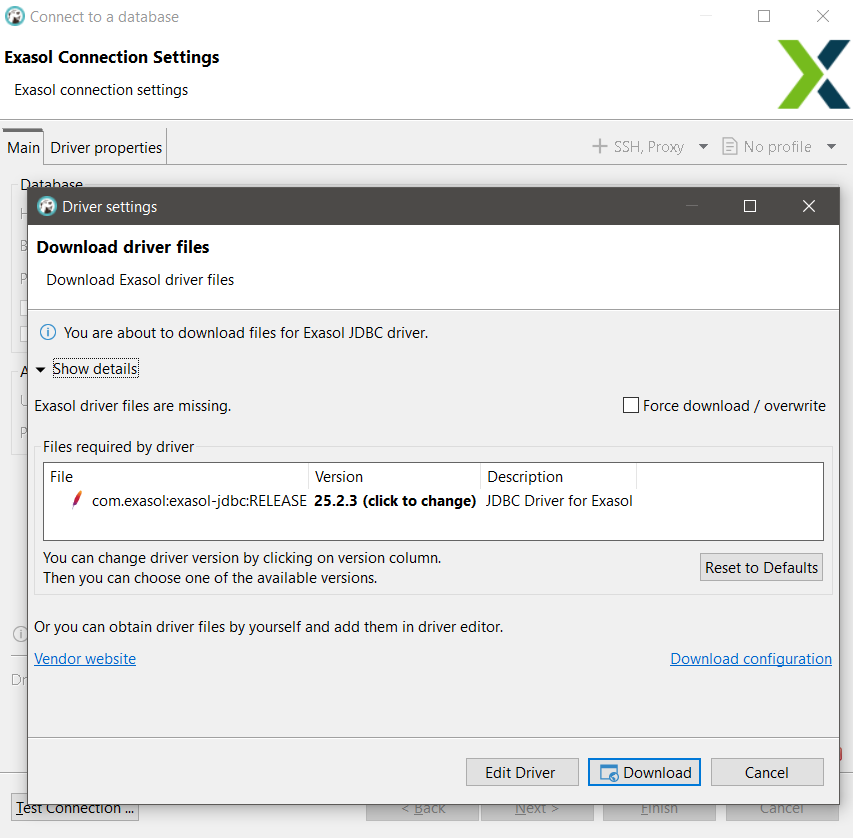This article explains how to connect to Exasol with DBeaver Community edition.
DBeaver Community is a free, universal SQL client and database administration tool that runs on Windows, Linux, and macOS. For more information, refer to the DBeaver Community website.
This article shows how to connect to Exasol using DBeaver Community edition on Windows. The procedure is essentially the same on all platforms. For more help, refer to the DBeaver Documentation.
Exasol takes no responsibility for changes in functionality or terms of use for third-party tools. For more details about the compatibility and use of these tools with Exasol, refer to the respective software vendor’s website.
Prerequisites
- DBeaver Community must be installed. For download links and instructions, visit the DBeaver Community website.
- The Exasol database must be running and reachable from the machine where DBeaver is running.
Connect to Exasol
-
In DBeaver, select Database > New Database Connection and select Exasol in the list of database drivers, then click on Next.
-
In Exasol Connection Settings, enter the following connection details:
Host List: The hostname, or a list of hosts.
For example:
203.0.110.11or203.0.110.11..13If the connection requires TLS encryption and a valid certificate is not found, include the certificate fingerprint in the connection string.
For example:
203.0.110.11/AAADJHGDF678DFG987DFH71BKJDFG087D97YGFODIJVODU9D8GFor more details about supported URLs for the JDBC driver, see Exasol URL.
Port: The Exasol database port number. The default port is 8563.
User name: The database username.
Password: The database password.
Example:
-
Click on Test Connection .... DBeaver will first check for an available JDBC driver for Exasol and prompt you to download the latest driver version if required.
-
In Download driver files, click on Show details to see details about the driver version selected by DBeaver. This should normally be the latet version. The Exasol JDBC drivers are backwards compatible, and we recommend that you always use the latest version.
-
Click on Download. DBeaver will download and install the driver, and will then try to connect. If the connection is successful, a confirmation message is shown.

If the connection test fails, check the connection string and authentication details.
-
Click on OK to close the Connection test dialog, then click on Finish to finish setting up the connection.
The Exasol database should now be listed in the Database Navigator section in DBeaver.
Next steps
To learn more about how to use DBeaver, refer to the DBeaver Documentation.




